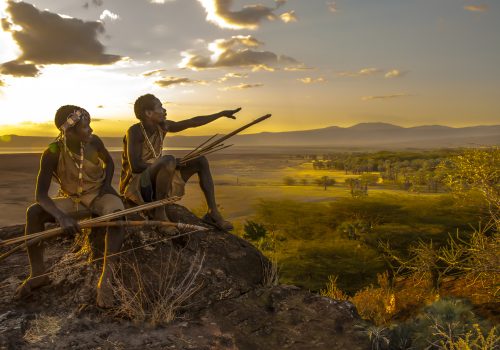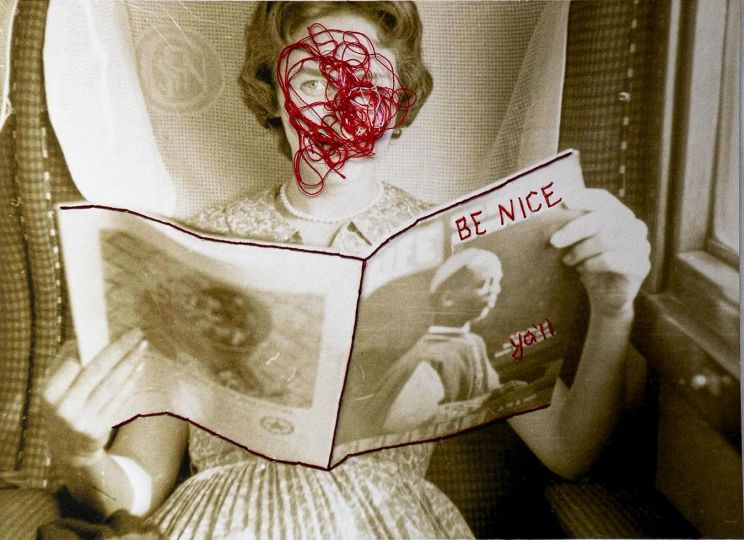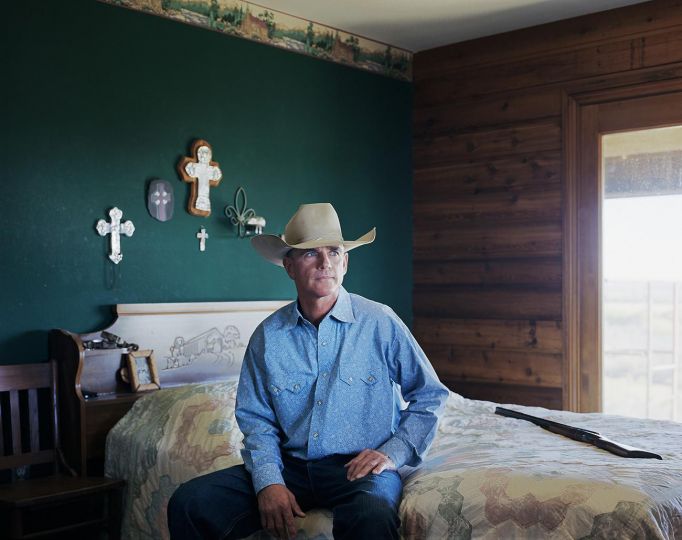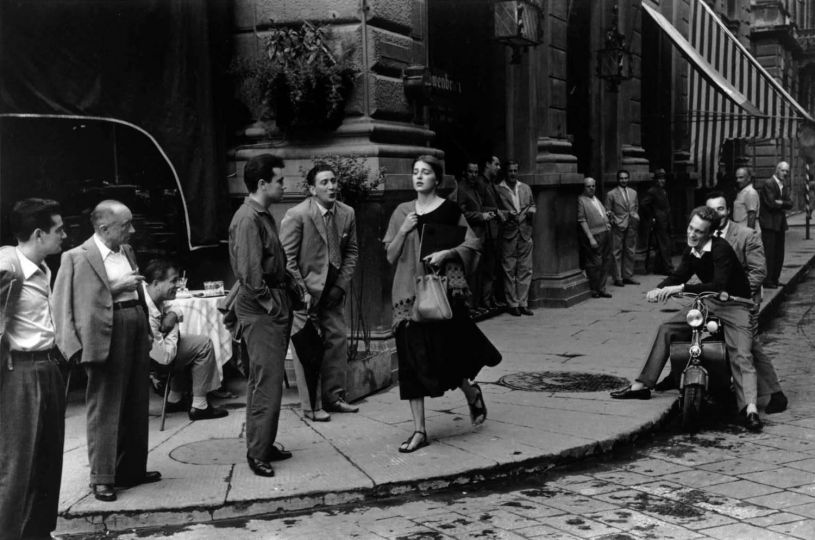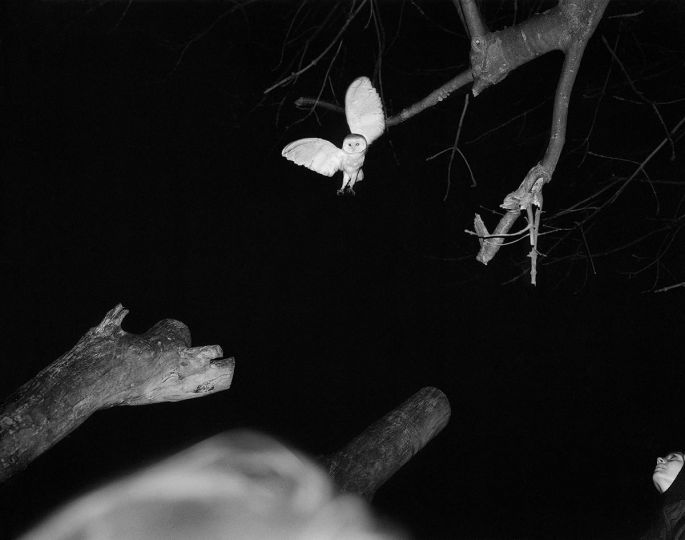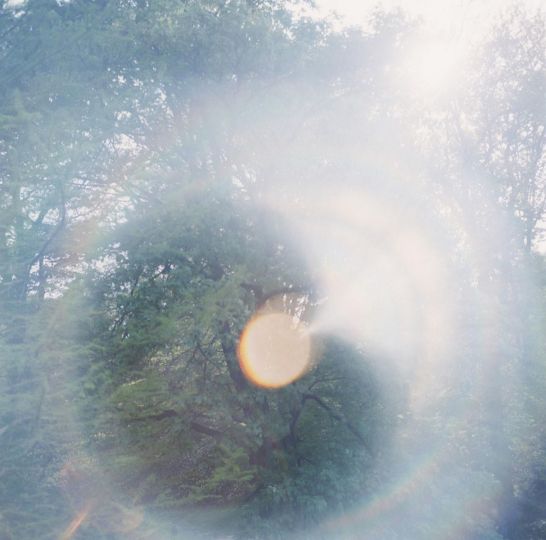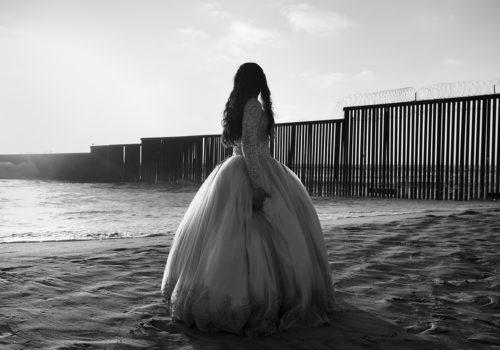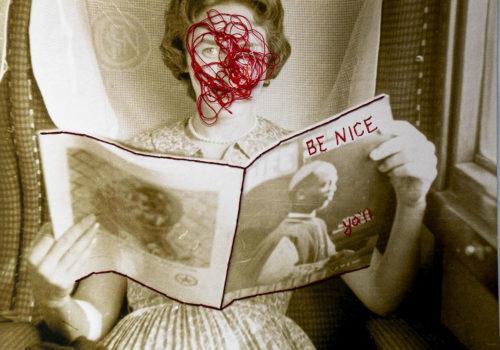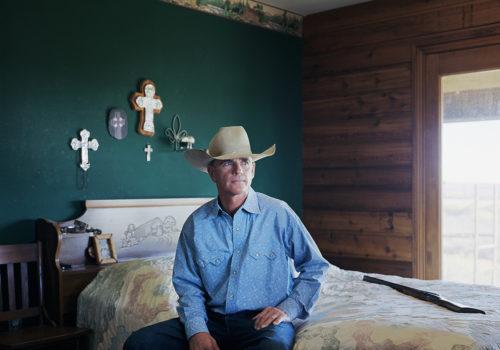Carol Beckwith and Angela Fisher first met in Kenya in 1978, and have spent the last forty years documenting the lives and beliefs of Africa’s indigenous people, from desert nomads to hunter gatherers, cattle keepers to kings. Crossing Africa by mule train, by camel caravan photo-graphing the lives of nomadic people, they journeyed over 300,000 miles through forty-four countries and recorded 150 African cultures.
“We were fortunate to have started our photography in the 1970s. We had the privilege to witness so many of the rich traditional cultures of that time. As the years progressed and the ceremonies we were witnessing began to change before our eyes, we gained a sense of urgency.Today, over 40% of the ceremonies we have recorded no longer exist. Many rituals we saw as well as the costumes, jewelry, and adornments have evolved over just a few decades into unrecognizable forms—or have vanished altogether—as Africans move inexorably toward a more urbanized and technology connected existence.”
Their recent and last publication, African Twilight: The Vanishing Rituals and Ceremonies of the African Continent, is the result of fourteen years of photography fieldwork. It is the final volume of their sixteen books of photographs of African Ceremonies. They witnessed political upheavals, closed frontiers, droughts and on occasion dangerous encounters. “The purpose” say Carol and Angela “of creating the African Twilight book of our photographs was to insure the legacy of Africa’s ancient traditions and stories for future generations.”
Patricia Lanza
African Twilight the book is published by Rizzoli, USA.
An Exhibition is currently at the Bowers Museum, near Los Angeles, California (bowers.org) On view through January 6, 2019.
Interview of Carol Beckwith and Angela Fisher by Patricia Lanza – November 13, 2018
Lanza:
How did you meet, and decide to collaborate with photography credits in both your names?
Angela and Carol
A: We met in Africa, when Carol was finishing her book on the Maasai on the border of Kenya and Tanzania. As a birthday present Carol’s father gave her a hot air ballon flight over Maasai land and Angela’s brother, Simon Fisher, was flying the balloon, Simon and Carol were both very young and attractive. At 1000 feet in the air, Simon said to Carol, “There is something I would really like to tell you…(Carol’s heart beat wildly)… “ There is someone you really need to meet…. my sister Angela.”
Simon saw that we were both extremely passionate about the cultures of Africa and could benefit from working together. At the time Angela was working on her book Africa Adorned.
We met one year later in Nairobi, Kenya, and realized we were kindred spirits, nomads at heart with an interest in photographing the indigenous people of Africa.The first week we met we shared a dream that one day we would record all the indigenous African cultures who hold ceremonies that move people through life from birth to death. We decided to take joint credit for the photographs, collaborating on the most powerful images.
We began with a book called African Ark photographed in the horn of Africa; Ethiopia, Eritrea, Kenya, Djibouti and Somalia. We headed out by ourselves with a guide, to photograph pastoralists, forest dwellers, desert nomads and the followers of every kind of religion from Islam to Christianity to Animism. We worked for five years making African Ark, published in 1990.
If we could tell the story of the horn of Africa, we realized that we could do it for the whole of Africa. The benefit of being two people, is that you can think and see big horizons and encourage each other. We just took it step by step, this was the jumping stone into the next project ,African Ceremonies
Q: Africa is a difficult place to travel. How did you manage to get around?
Angela and Carol
A: We used a lot of local transportation. We organized a mule train of 16 ani-mals packed with all our possessions for a trip to Surmaland for six weeks. We traveled up and down over 10,000 foot mountains close to the border of Sudan for six days. When we arrived in the first remote village, the women came out to meet us and some of them had never seen a white woman. We were deeply touched by how warmly they greeted us.
When we worked with the Dinka in Southern Sudan we had to transverse tributaries of the Nile rivers in a dug out canoe. The canoes were very rocky, and tippy, you had to be careful not to lean or risk going overboard with your cameras. We followed the Dinka into their dry season cattle camps for court-ship season.
On our first trip together to Africa we met the Wodaabe people. We travelled with them by donkey and camel for six weeks. They invited us to their Geerewol ceremony, where the men performed charm and beauty dances to attract wives. We lived off of one calabash of milk a day and when we grew tired or impatient with the long journey, our Wodaabe chief would say to us: “She who can’t bear the smoke will never get to the fire.” In this way we learned the art of patience and perseverance. The Wodaabe never left us alone, always watching over us to keep us safe.
We have worked in 44 countries, living in savannahs and grasslands where the climate is fairly amenable. In the deserts we were carrying light weight tents and food supplies with us. When living with the Surma in southwest Ethiopia for 5 weeks we had them build thatching over the top of our tent to protect us from intense heat.
Angela had a tent which was over the hole of an enormous bush rat. This rat would come up at night, directly under her sleeping bag and the thin tenting was not much protection. The Surma moved her tent and found out exactly what she was sleeping on.
Northern Ethiopia by contrast was where we were working in cold conditions, and stayed in tiny rest houses. Our diet was sour dough Njera pancakes, the staple diet of Ethiopians.
The sands of the Sahara are warmed by the sun, and at night when the tem-perature drops, the warm sands beneath you keeps you comfortable all night. Above you are the stars and the milky way.
Life was simple in a wonderful way.. We were always living as close to the culture as possible, to gain the friendship and trust of the people we were living with and to record their rituals and ceremonies.
Lanza
Q:Your color photography is vibrant, often taken in difficult situations.
How do you produce images of this quality?
Angela and Carol
A: We shot film until 2004,. We really loved film, it was with great difficulty we switched over to digital.
We learned to carry film in Africa, and always wrap it in sleeping bags so that film never gets overheated. We used Fuji Velvia film after first starting with Kodachrome. When we got home to London we would clip test two or three frames of each roll so we knew if we should to push or pull the remainder of the film.
We made a record of where and when we had shot film during the day and always tried to shoot in good light. We got up to shoot every morning from 7am to 9:30am and then from 4pm until dark. If we had to shoot during the midday we used fill flash attempting to make the image look natural as possible in the available light.
We have photographed all our books in color. When we moved to digital we made sure it was corrected to show exactly what was seen.
Lanza
Q:When you switched to digital in 2004, how did you process?
Angela and Carol
A: We would not do any processing in the field. We have an assistant in Lon-don who understands digital and analog and is able to carefully balance the digital with the analog for the book project. Our last book, African Twilight has some carefully balanced film and digital on the same page.
Lanza
Q:What made you decide to take video?
Carol
A: Initially we both worked in stills, but I (Carol) realized we were creating iconic images and with video this brought a ground-level reality to the image, and the images come to life. It brought movement and sound and voice. We started shooting video vertically instead of horizontally so that the moving footage would appear to jump out of the vertical still image.. We could move around the person and record highlight moments that we might never see again of a ceremony or a climax of a ritual that might be lost to history.. The videos in our exhibitions give the feeling of living culture. This medium has become part of our vocabulary.
Q: When did you begin to shoot video
Carol
A: I made my first video in 1980. I took a super 8 camera to Niger. On the way to Africa I was asked to bring home some video of the Wodaabe charm dance, with eyes rolling and teeth flashing. The resulting film was so exciting that to this day we include it in our exhibitions.
Angela
A: Ceremonies are difficult to shoot because you have to be on the move.
We started bringing two zoom lenses, the 18-200mm and 80-200mm.
This made it easy to be mobile. In using these lenses you give up the ultimate quality of the fixed focus lens, but it serves our purpose of being on the move and being in right place.
In giving up the ultimate technical quality, we caught the peak of the emotional quality. We wanted to film from within the culture inside the hearts and minds of our subjects.
Lanza
Q:What made you decide that this might be your final publication?
A: Angela and Carol
We believe it’s more and more difficult to find traditional cultures and cere-monies. We have spent 14 years making African Twilight, and realize this was the last pan African study we could do at this level and depth. Sometimes it took ten years to get permission to obtain access to the subject. To get a permit to photograph in the Congo you have to get permits from both Kinshasa and London.
It took 9 moths to get permission to photograph the Kuba Kingdom in the heart of DR Congo.
Serendipitously one day in London we met the son of the Kuba King, who was showing his royal textiles to the British Museum. Prince Kwete agreed to take us to visit his kingdom. After that it took two years for permission from the elders to do this. We had to find a small private plane to take us into the heart of his Kingdom. After three weeks of working in the area, we were told, due to the elections in the country, that there could be danger at the airport in Kinshasa and we had to get out within 48 hours.
We had a private missionary plane come and collect us and had to hand the pilot payment before we were taken on board We got back to Kinshasa and when we were en route to the airport to fly home we got caught in a traffic jam and people started going crazy. So we got out of the car with our luggage and started walking. Traditional women came around us to protect us from bandits on the road. We walked out of the traffic jam and then flagged down a vehicle to get us to the terminal.
Working in the Congo is very tough, it is expensive and there is not room for negotiation.
Lanza
Q:What would you like for people to know about your lifetime of working in Africa.
Angela and Carol
A:I think for us has been a privilege to work in Africa, where we have lived half our lives. When we go to Africa people seem happy. There are a lot of people living fairly simple and wonderfully peaceful and contented lives They have a community that gives them a sense of security, not isolated. They have elders sharing their experiences. They have rights of passage as they enter into the stages of life. They know what is expected of them when they become elders. Their communities are aware of nature, they understand the weather, how to protect the wild animals, and how to look after themselves. They have a closeness of living with nature and being aware of their own spirit world.
When we lived among the Surma people, we were greeted by Surma women, and if you have never been kissed by a woman with a large lip plate, it’s wonderful. They want to hug you and be close to you. We are exactly the same, except they are naked from the waist up.
Africa is the home of all humanity. We all came out of Africa thousands of years ago. We all are all the same human beings. Like the bushmen in the Kalahari, there are several pockets in Africa where hunter gatherers are still living in the lifestyle that goes back furthest to our origins.
In light of the conflict and chaos in the world today, we feel that it is more im-portant than ever to listen to the messages from these ancient cultures. Cel-ebrating our similarities, accepting our differences is not only essential to the evolution of humankind, but paramount to the pursuit of world peace.
Lanza
Q:What is coming?
A: Angela & Carol
We have been asked to write our story: How the past 40 years came about. How our collaboration as two women worked for the past four decades.
We have also been asked to do a documentary film.
More important is that we want to find a home for our archive.
We have 500,000 still images, one thousand hours of videos, 200 illustrated field journals and four travelling exhibitions.
We would like to give this back to the world, so it’s safe in an institution with an active educational program for give knowledge and inspiration to future generations of Africans andto the world at large.
In order to do this we will be looking for sponsorships for the completion and placement of our archive.
Upcoming Events and Exhibitions:
Holden Luntz Gallery, Palm Beach, FLorida November 24, 2018 opening exhibition and a presentation with a Lecture.This is a Group show
The Royal Geographic Society, London, December 3, 2018, Lecture 6;30pm
THK GALLERY: EXHIBITION November 1, 2018 to January 31, 2019
December 15, 2018 Opening at THK Gallery Exhibit in Cape Town, South Africa. Photographs and Video.
February 7, 2019 to February 10, 2019
Tribal Art and Textile Fair in San Francisco, CA
Exhibit of African Twilight from the Bowers Museum, 2 lectures by Carol & Angela
Patricia Lanza was the Director of Talent & Content for the Annenberg Space for Photography in Los Angeles for 8 years and produced 21 exhibitions from 2009-2017. She is now an independent creative consultant for curation and exhibition production.She has two exhibitions in development now, one approved and the other is with venues for review.Her new brand is 360curate.com
Patricia will also have a photography exhibition (two person show) on Vincent Van Gogh in 2019, with Lynn Johnson. This exhibition is her photography with hers, they have been photographing in Europe over the past year. Lynn Johnson has a story that was published 22 years ago with National Geographic, many images have never been seen or published. Patricia and Lynn have photographs of places that are not accessible to the public, where Van Vogh lived & worked, including in the museum in Amsterdam (artifacts). The exhibition will open at the Leica Gallery in Beverly Hills.

